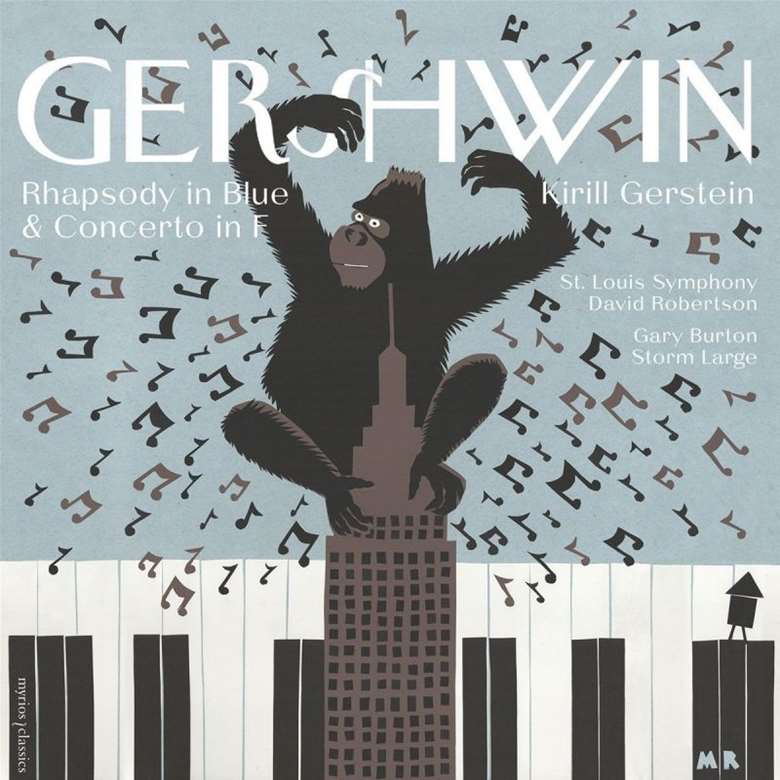After Gershwin's Rhapsody in Blue, what next?
Patrick O'Connor
Monday, July 11, 2016
If you love Gershwin's Rhapsody in Blue, try exploring these new musical avenues...

The question that you must ask yourself, after hearing Gershwin's Rhapsody in Blue, is not so much 'What next?' as 'Which road shall I take? Shall it be jazz or symphonic?' The question is all the more pressing since you may have heard Rhapsody in Blue either in its first version for jazz band, or the later, larger-scale arrangement. As a starting point, therefore, it might be prudent to hear the composer himself as soloist, with the Paul Whiteman band recorded in 1924, or his piano-roll version, recorded with a modern backing, under Michael Tilson Thomas, or the later, 1927 rearrangement, also with Whiteman. There are far too many recordings of Rhapsody in Blue! If you have a favourite conductor, Bernstein, Tilson Thomas, Previn, Rattle, Maazel, Mehta, Hickox or Davis (Colin or Carl), they've all recorded it. But for me Tilson Thomas is the man, either accompanying the composer or playing the solo himself. This has the advantage of being programmed with one of the works that is the obvious answer - Gershwin's Second Rhapsody, composed in 1932.
Gershwin Concerto for Piano and Orchestra (1925)
Composed the year after Rhapsody in Blue, Gershwin's Piano Concerto belongs to the year of art deco, 1925, when the fusion of modern American music, and especially dance music burst upon Europe, Gershwin himself depicted this in his tone-poem An American in Paris (1928), so the two works are best heard in tandem.
Ravel Piano Concerto (1931)
Gershwin wanted to study with Ravel, but the Frenchman didn't think it was a good idea: he didn't want to see Gershwin lose his 'great melodic spontaneity', In his article Take Jazz Seriously, Ravel wrote , 'I have heard, Gershwin's works and I find them intriguing'. The influence is there in his concerto, as well as the 1927 Sonata for Violin and Piano, which has a 'blues' section. Michelangeli's recording of the concerto has yet to be surpassed.
Poulenc Concerto for Two Pianos (1932)
Even more than Ravel, the younger French composers, including Les Six, were infected by the impact of jazz, of African-American dances and songs. Poulenc, the most French of all composers, like Gershwin had the highest regard for the value of popular song.
Milhaud La création du monde (1923)
Anticipating Gershwin by one year, Milhaud has some claim to be the first composer to successfully integrate jazz into a symphonic worik, in this case the score for a ballet choreographed by Jean Borlin, with sets by Fernand Leger. Presented by the Ballets Suédois in Paris in 1923, it was later used by Agnes de Mille for a ballet called Black Ritual.
Stravinsky Ebony Concerto (1946)
Critics have complained that Stravinsky understood the cross rhythms and the use of instruments in jazz, without tackling its peculiar poetry. Be that as it may, the Ebony Concerto, written for Benny Goodman (who took Russian lessons with Mme Stravinsky at the same time) is one of that special group of works which Goodman played for the first time (there are also pieces by Bartók, Bernstein, Copland and Gould), all of which might claim descent from Gershwin's example.
Jelly Roll Morton Piano Works
Morton once claimed that he 'happened to be the creator of jazz in the year of 1902' - he was just 12 years old then. Though the history of jazz and the blues goes back a lot further than people might think, and the influences on it came not only from Africa and Europe but from South America too, Morton is indeed one of the most important figures. As a pianist and a small jazz-band leader, his music has inspired generation after generation.
Duke Ellington Creole Rhapsody
Ellington bestrode the worlds of jazz and the concert-hall for more than 40 years. More than any other jazz musician, he adapted and absorbed the different styles of music in his own time. His compositions ranged from the early Black and Tan Fantasy to music-theatre works, blues, film music. His early compositions, such as Creole Rhapsody (1931), contemporary with Gershwin's work make Ellington perhaps the most apt choice as a parallel for Rhapsody in Blue.
Billie Holiday A Fine Romance
The Callas of the Blues, Holiday's recording of Gershwin's 'Summertime' from Porgy and Bess was one of her first sides recorded under her own name, rather than her nom-de-guerre, Lady Day. Holiday transforms each song, whether it's a standard popular song, or a blues from her jazz repertory, into something searing and passionate.
Orchestre Creole Matou Pot-pourri Biguine
Part of the little-known and under-researched area of jazz history, these orchestras - featuring musicians from the French-speaking Caribbean and composers such as Maiotte Almaby, Stelio, Léona Bagriel and Eugène Delouche played throughout the 1920s and 30s in such famous Paris clubs as the Cabane Bambou, Bal Nègre and L'Elan Noir. The sounds are infectious - a call to dance; one can hear at once that the influences are both ancient and modern.
This article originally appeared in the June 1996 issue of Gramophone magazine. To subscribe to Gramophone, visit: magsubscriptions.com











